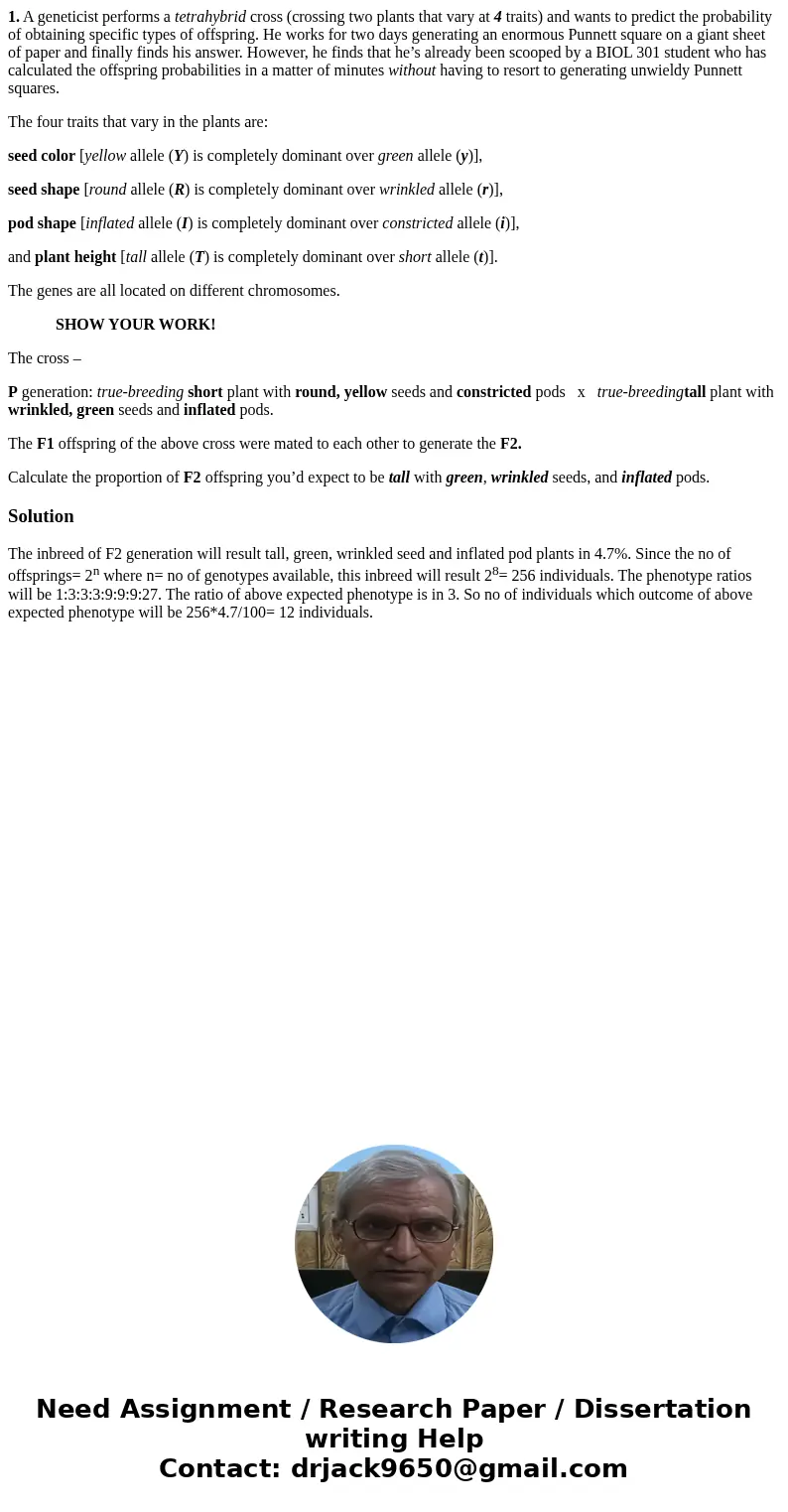1 A geneticist performs a tetrahybrid cross crossing two pla
1. A geneticist performs a tetrahybrid cross (crossing two plants that vary at 4 traits) and wants to predict the probability of obtaining specific types of offspring. He works for two days generating an enormous Punnett square on a giant sheet of paper and finally finds his answer. However, he finds that he’s already been scooped by a BIOL 301 student who has calculated the offspring probabilities in a matter of minutes without having to resort to generating unwieldy Punnett squares.
The four traits that vary in the plants are:
seed color [yellow allele (Y) is completely dominant over green allele (y)],
seed shape [round allele (R) is completely dominant over wrinkled allele (r)],
pod shape [inflated allele (I) is completely dominant over constricted allele (i)],
and plant height [tall allele (T) is completely dominant over short allele (t)].
The genes are all located on different chromosomes.
SHOW YOUR WORK!
The cross –
P generation: true-breeding short plant with round, yellow seeds and constricted pods x true-breedingtall plant with wrinkled, green seeds and inflated pods.
The F1 offspring of the above cross were mated to each other to generate the F2.
Calculate the proportion of F2 offspring you’d expect to be tall with green, wrinkled seeds, and inflated pods.
Solution
The inbreed of F2 generation will result tall, green, wrinkled seed and inflated pod plants in 4.7%. Since the no of offsprings= 2n where n= no of genotypes available, this inbreed will result 28= 256 individuals. The phenotype ratios will be 1:3:3:3:9:9:9:27. The ratio of above expected phenotype is in 3. So no of individuals which outcome of above expected phenotype will be 256*4.7/100= 12 individuals.

 Homework Sourse
Homework Sourse